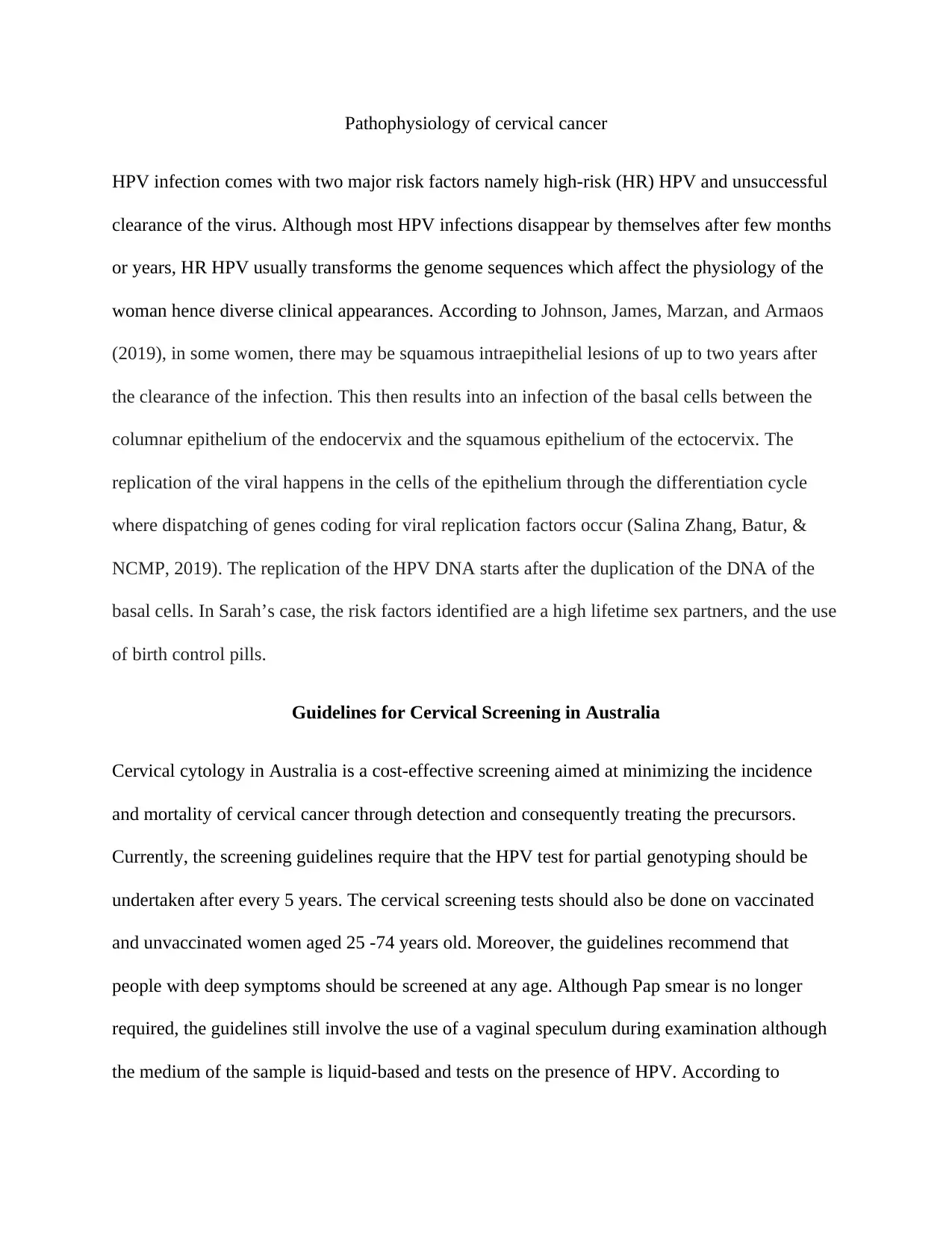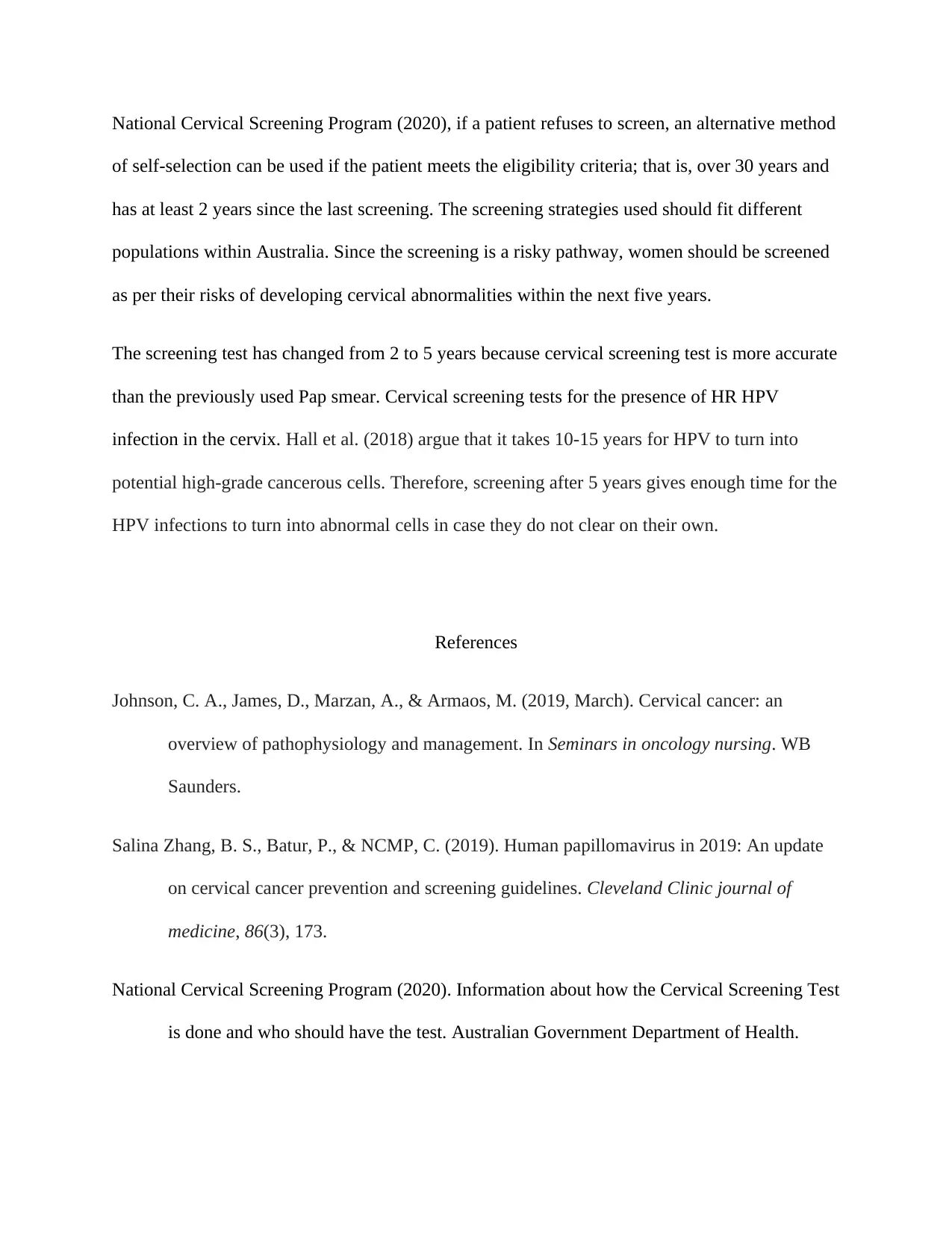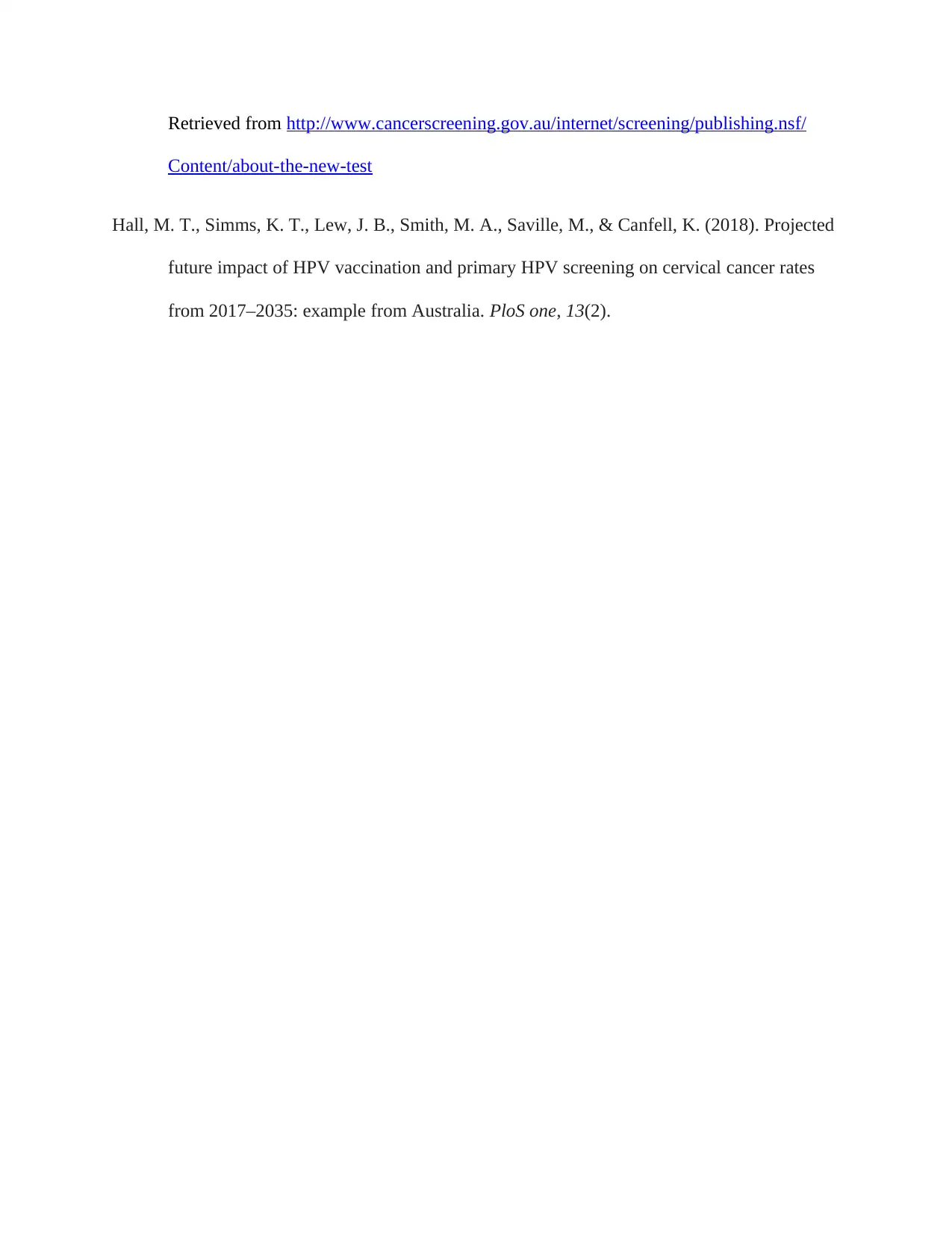Pathophysiology of Cervical Cancer and Screening Guidelines
VerifiedAdded on 2022/08/22
|3
|686
|31
Case Study
AI Summary
This case study examines the pathophysiology of cervical cancer, focusing on the role of high-risk HPV infection and factors contributing to the disease. The assignment analyzes a case involving a 33-year-old woman, Sarah, highlighting her risk factors such as multiple sexual partners and the use of birth control pills, and her diagnosis of high-grade squamous intraepithelial lesion and severe dysplasia. The document also outlines the latest cervical screening guidelines in Australia, including the shift from a two-year to a five-year screening interval, and provides a scientific rationale for these changes, emphasizing the accuracy of HPV testing and the time frame for HPV infections to develop into cancerous cells. The document includes references to key research articles and guidelines.
1 out of 3










![[object Object]](/_next/static/media/star-bottom.7253800d.svg)